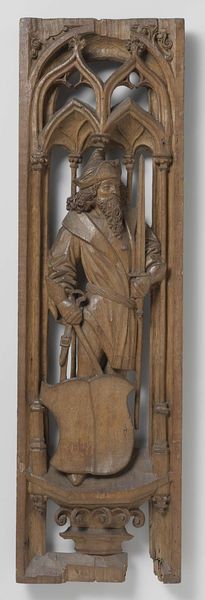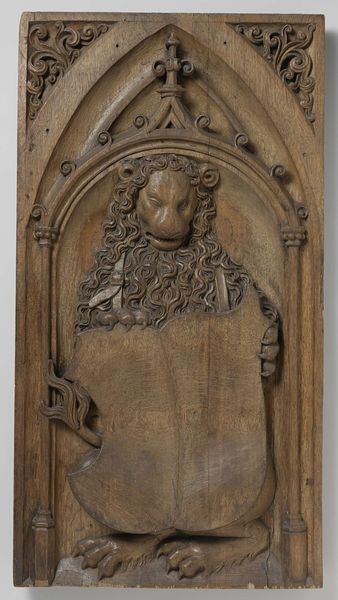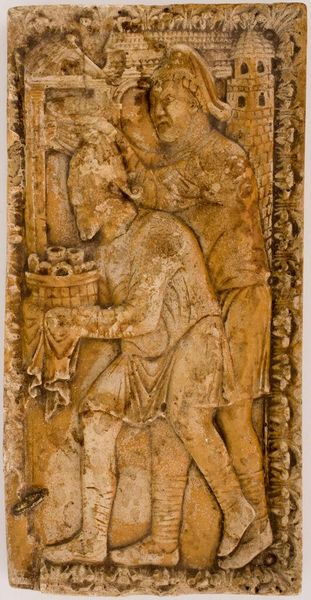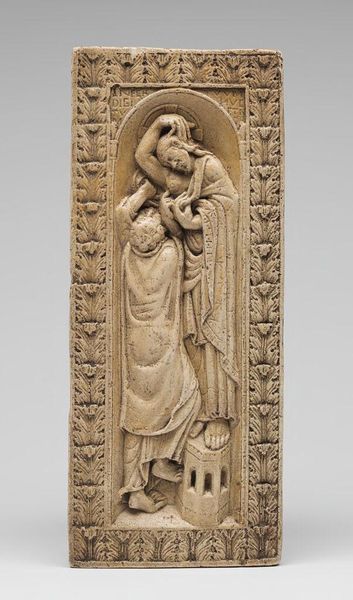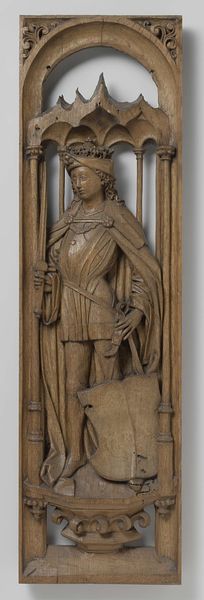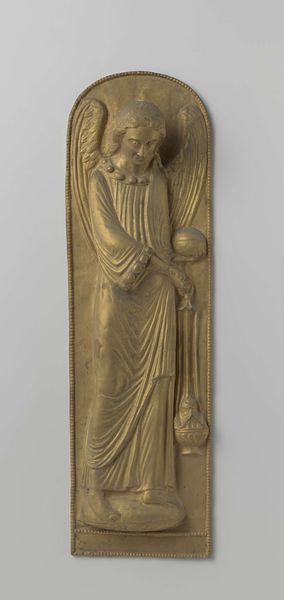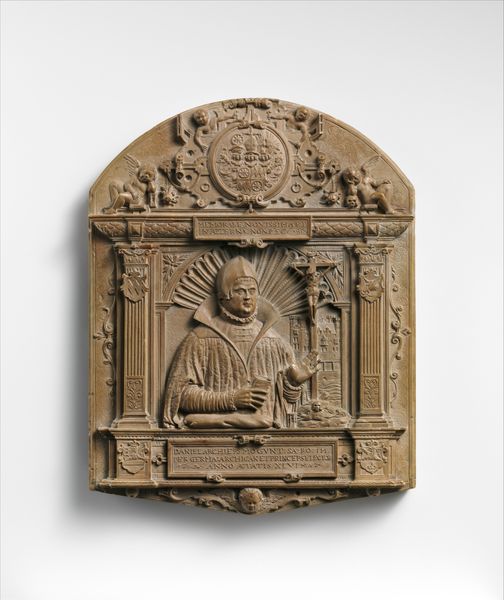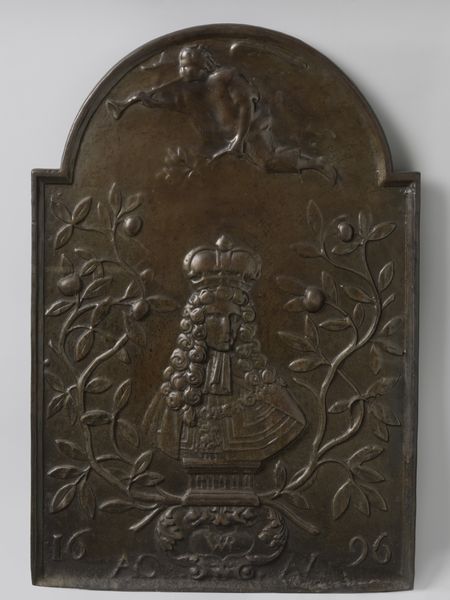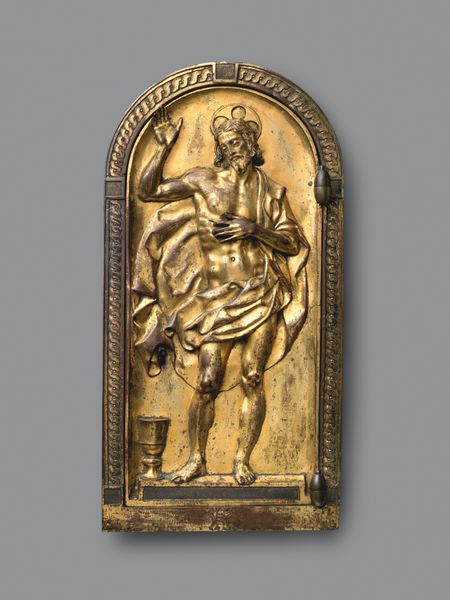
Panels from an organ case in the church of Saint Vitus in Naarden c. 1510 - 1520
0:00
0:00
carving, relief, sculpture, wood
#
medieval
#
carving
#
narrative-art
#
sculpture
#
relief
#
figuration
#
sculpture
#
wood
#
northern-renaissance
Dimensions: height 88 cm, width 47.3 cm, depth 5 cm
Copyright: Rijks Museum: Open Domain
Curator: My initial thought is of texture; the artist's masterful use of the woodgrain elevates the carving. Editor: We’re currently looking at a wooden relief titled "Panels from an organ case in the church of Saint Vitus in Naarden," crafted by Jan van Schayck sometime between 1510 and 1520. It’s a fascinating example of Northern Renaissance carving. Curator: Fascinating, yes. But "fascinating" is not my word. The raw, almost primal, figure exudes an archaic strength, almost a pagan survival within a Christian framework. What does it signify that this wild man is paired with the stylized, curvilinear shield? Editor: Perhaps it signifies a meeting of untamed nature and the symbols of civilization—the burgeoning civic pride of the Northern Renaissance expressed through heraldry. It reminds us how the wild man, "l'homme sauvage", often appears in such contexts in the art of this period as the wild being domesticated in a heraldic device. Curator: Precisely. But consider, too, the context of the organ. Sound, music... the manipulation of air into audible emotion and spiritual resonance. The wild man, constrained, becomes a vehicle, a support for sacred expression. It shows us something important about memory - these are the pre-Christian forms providing the ground for this cultural production. Editor: A compelling point. The constraints imposed by the medium itself – the wood, the carving –mirror the thematic tension. There's also the interesting contrast between the intricate curls of the figure's hair and the smooth expanse of the shield he bears, further emphasizing this dichotomy. The figure itself looks uncomfortable - perhaps signifying the suppression of the ancient beliefs it evokes? Curator: Or, equally plausible, his transfiguration. The discomfort, as you call it, becomes the crucible where the old transforms into something new. The tension between primal energy and ordered purpose gives it, for me, tremendous symbolic weight. It reminds us that faith is often an act of translation, of adapting the raw materials of the past into a meaningful present. Editor: Yes, a complex, enduring piece of craftsmanship and cultural negotiation, deftly visualized in a medium that seems to organically embody these themes. It invites reflection, definitely more than "fascinating".
Comments
rijksmuseum about 2 years ago
⋮
These ten figures adorned the medieval organ in the church of Saint Vitus in Naarden. Each figure holds a weapon and a coat of arms on a strap. Some are dressed as knights with a breastplate and a helmet, others as princes or noblemen. They may represent the Counts of Holland. All the shields would have originally been painted.
Join the conversation
Join millions of artists and users on Artera today and experience the ultimate creative platform.

